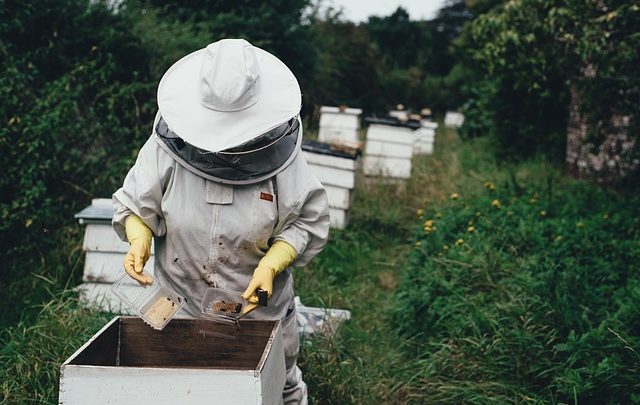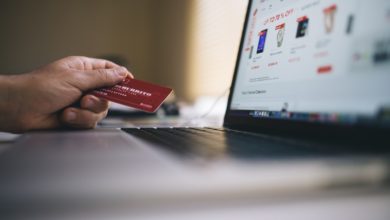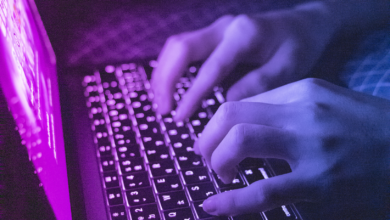Technology
How Blockchain Can be Used in The Bee Industry
Oracle and the World Bee Project have teamed up to solve some of the industry's issues

Honey is among the most exported goods in the world. Since it isn’t grown in every corner, the supply chain can be very extensive. Last year, Oracle joined hands with the World Bee Project to develop a blockchain-based solution to track the honey’s supply chain.
This wasn’t the first time that a company had used blockchain to track supply chains and logistics. However, it turned out to be a major success, and the two firms are ready to start a new project.
More About the Partnership
The companies are working together to find a solution to the growing problem of fake and counterfeit products. This is very important since, according to a Blokt report, about 75 percent of honey sold is fake and contains additives such as salt, corn syrup, and refined sugar.
Given the big success of the first partnership, the two firms have decided to extend the deal to understand what is causing the bee population to decline. The main goal of this new partnership is to help agriculturists manage pollinator and bee habitats.
Jay Chugh, Oracle’s senior director of products, said:
“Today’s bee population is declining at a very fast rate, which is being caused by human intervention and the use of fertilizers in crops. This is harmful for many reasons. For example, about 77% of all the food we eat depends on pollination. That equates to roughly $577 billion globally of food produced each year. Additionally, 1.4 billion farmers livelihoods rely on pollinators.”
Oracle gave an exposition demo at the London Blockchain Summit 2019, titled “The Connected Hive and The Future of Farming,” to shed more light on the plan.
How Will it Work?
Connected devices to provide in-depth insight
The system is known as the “World Bee Project Hive Network.” The Hive uses IoT sensors to remotely collect data, which is then fed into Oracle’s Cloud. The platform performs different tests using analytical tools, including AI, to provide insights into the nature of relationships bees share with their environments.
Now, the companies intend to use blockchain to capture, share, and store information related to the supply chain as well. They will use this collected information to validate data and confirm the origin of products being sold.
The team worked with experts from the University of Reading to develop a verification process that includes collecting and storing identifiable ‘signatures’ from the environment.
These signatures are stored in the blockchain and honey is tested to confirm it’s coming from the right source. It will not get certified if it contains signatures from other sources.
The Hive Network has received enough funding to operate in thirty locations. It’s currently live in Edinburgh, the U.K. (Reading, London and Chelsea Physic Garden) and Israel. Through IoT sensors, the goal is to interconnect 500 million farmers.
Blockchain to ensure a sustainable production
According to Oracle, the company aims to create a ‘BeeMark’ label in combination with the Hive Network.
Behind the ‘BeeMark’ label is a blockchain framework. In combination with the Hive Network, Oracle will develop the label to show that honey is being produced sustainably.
It’ll also ensure that those pollinated products are not only obtained from safe and sustainable sources but that it hasn’t been tampered with.
“The ‘BeeMark’ label is a monitor that we are using to capture sound, humidity, temperature, the weight of beehives and more. Once this data is captured, it will be placed on the blockchain to show that honey hasn’t been changed or corrupted, ” said John Abel, vice president of cloud and innovation at Oracle.
He explained that BeeMark is still in its pilot phase. “The idea is for consumers to go into a retailer and scan a QR code from the BeeMark label to validate that honey came from a particular source.”
The blockchain is powered by Hyperledger Fabric, and for now, the only partner is the World Bee Project.
According to Abel, they’re aiming expansion to other industries. He explained:
“With the Bee Mark, the goal is to have a large scalability platform via blockchain and key management will be a critical component, as we aim to provide a platform that has no barrier to adoption.”
How Will It Help the Industry
The program is not only helping counterfeit products, but it will also help improve honey production. Customers will know if they are buying an authenticated product or not.




You actually said this fantastically!how to write 5 paragraph essay online essay helper newsletter writing service